1918 German Revolution Worksheets
Do you want to save dozens of hours in time? Get your evenings and weekends back? Be able to teach about the 1918 German Revolution to your students?
Our worksheet bundle includes a fact file and printable worksheets and student activities. Perfect for both the classroom and homeschooling!
Resource Examples
Click any of the example images below to view a larger version.
Fact File
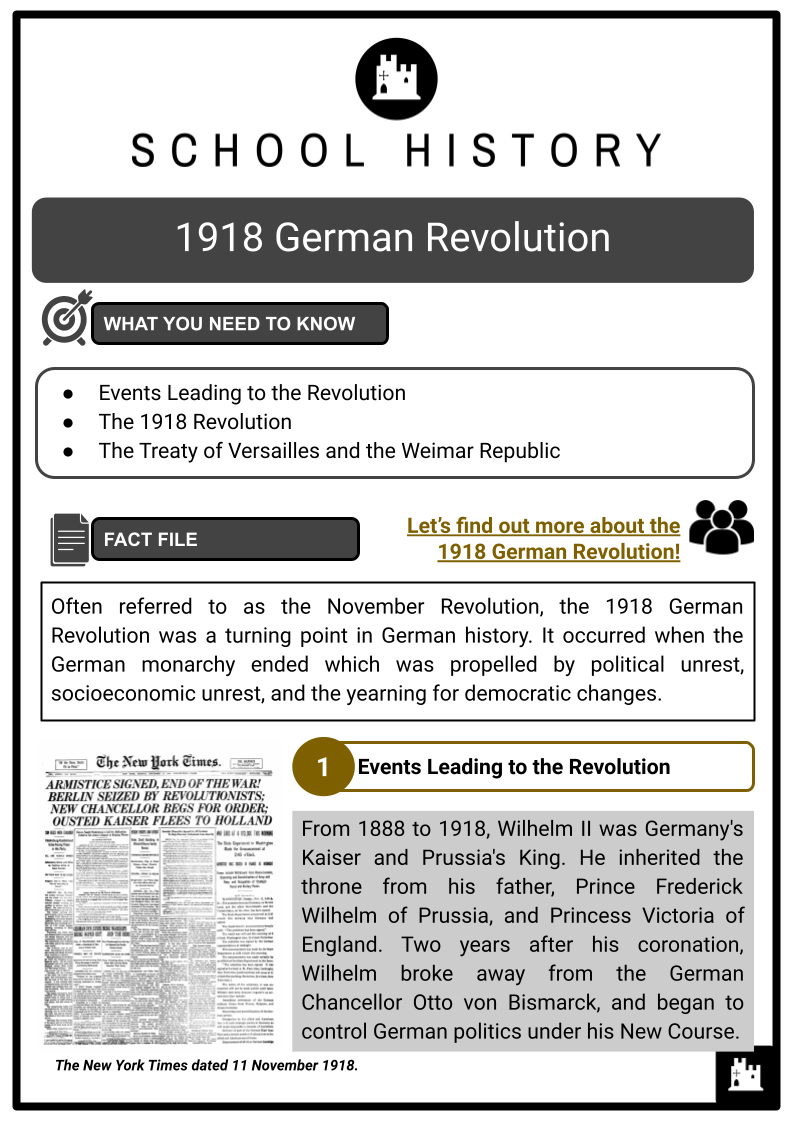
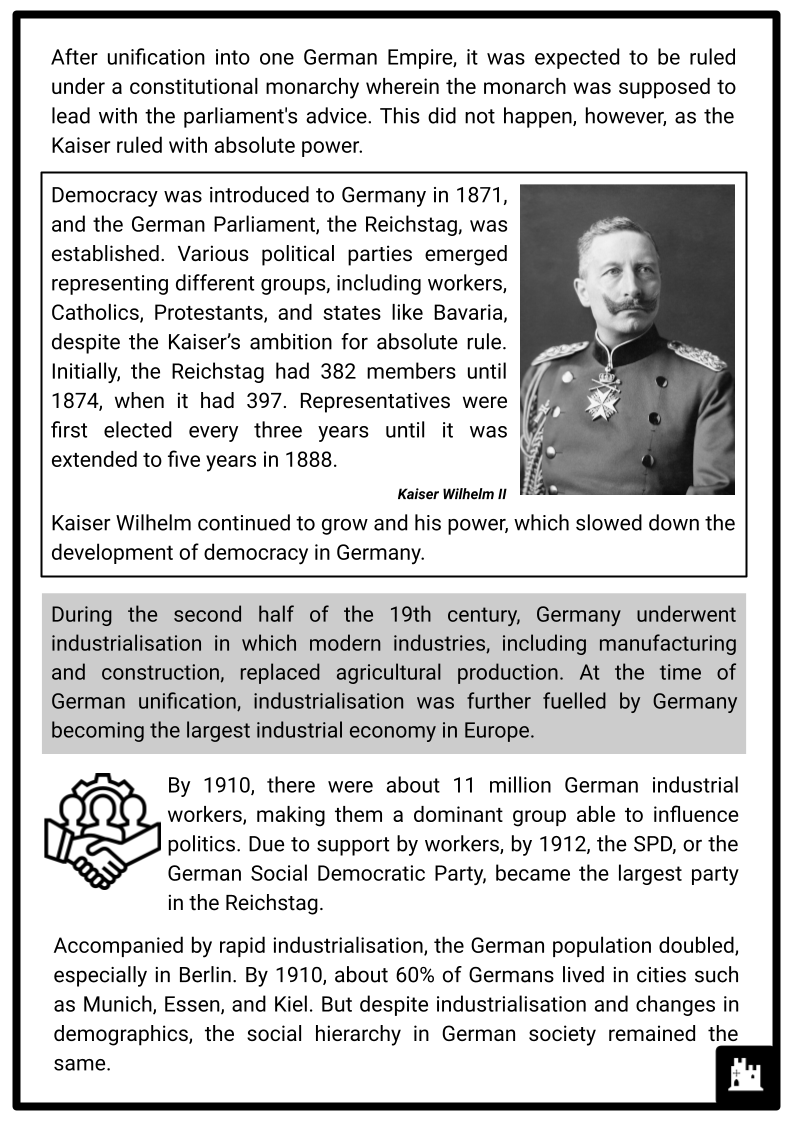
Student Activities
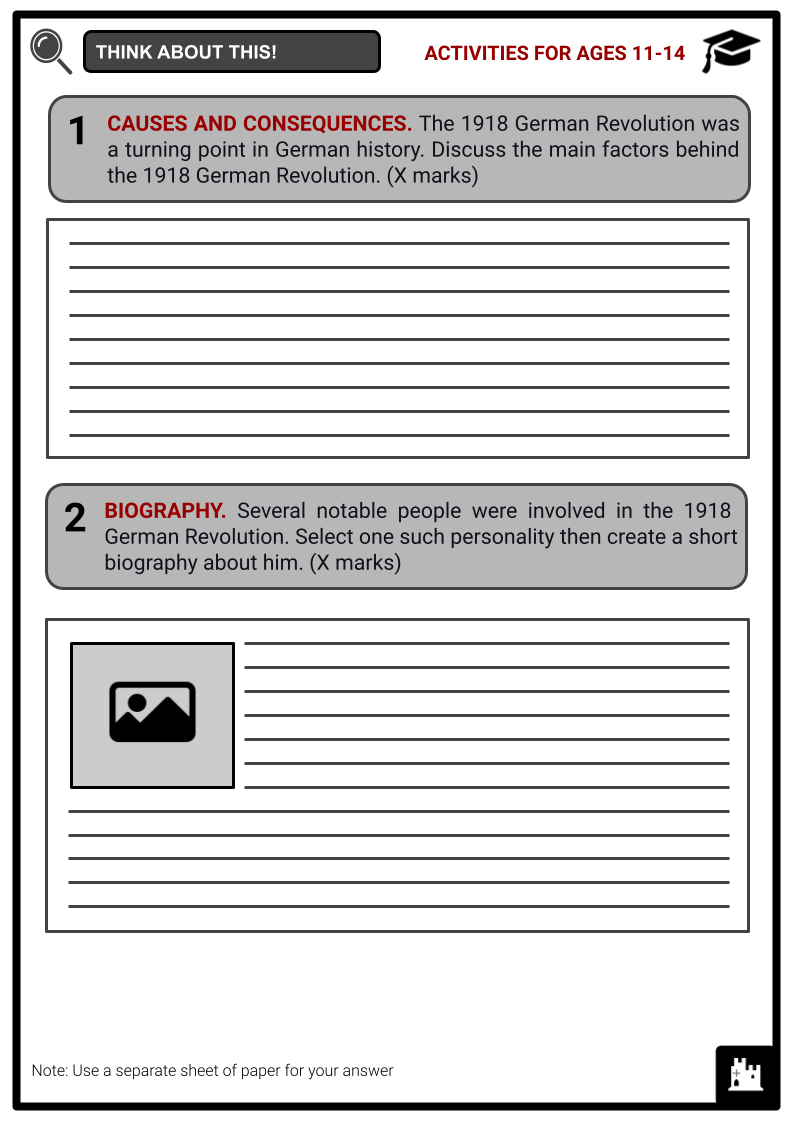
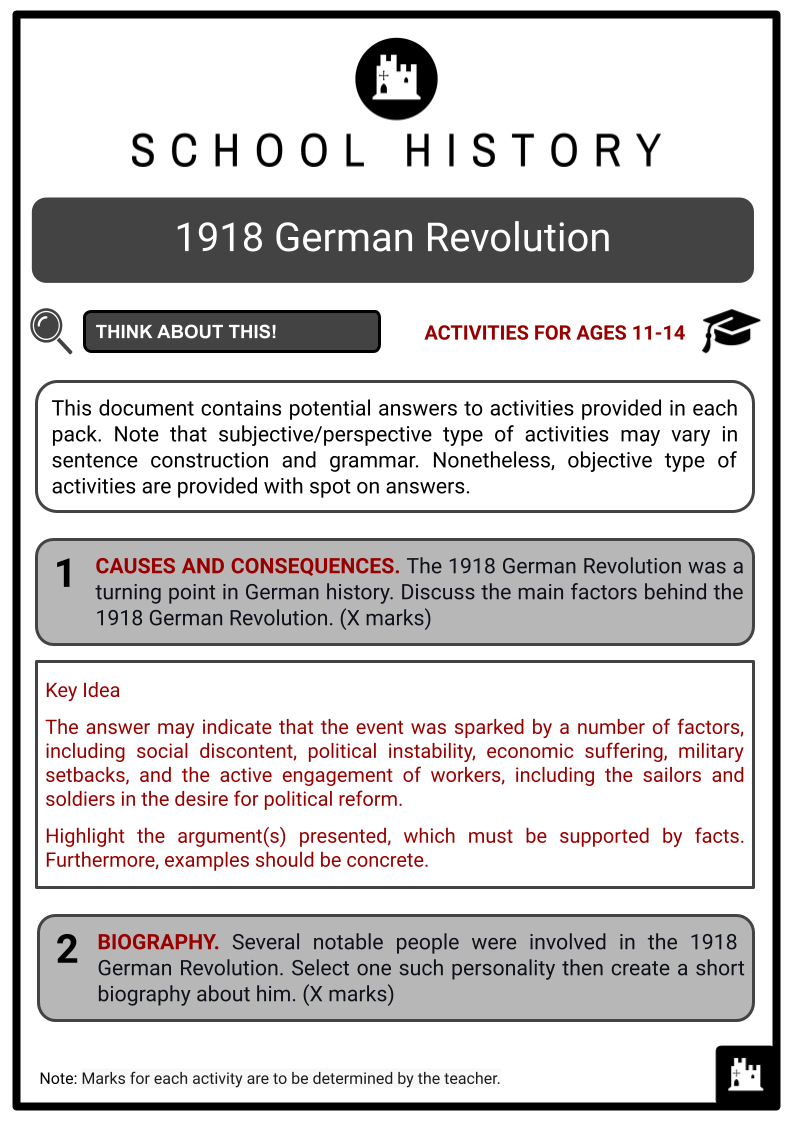
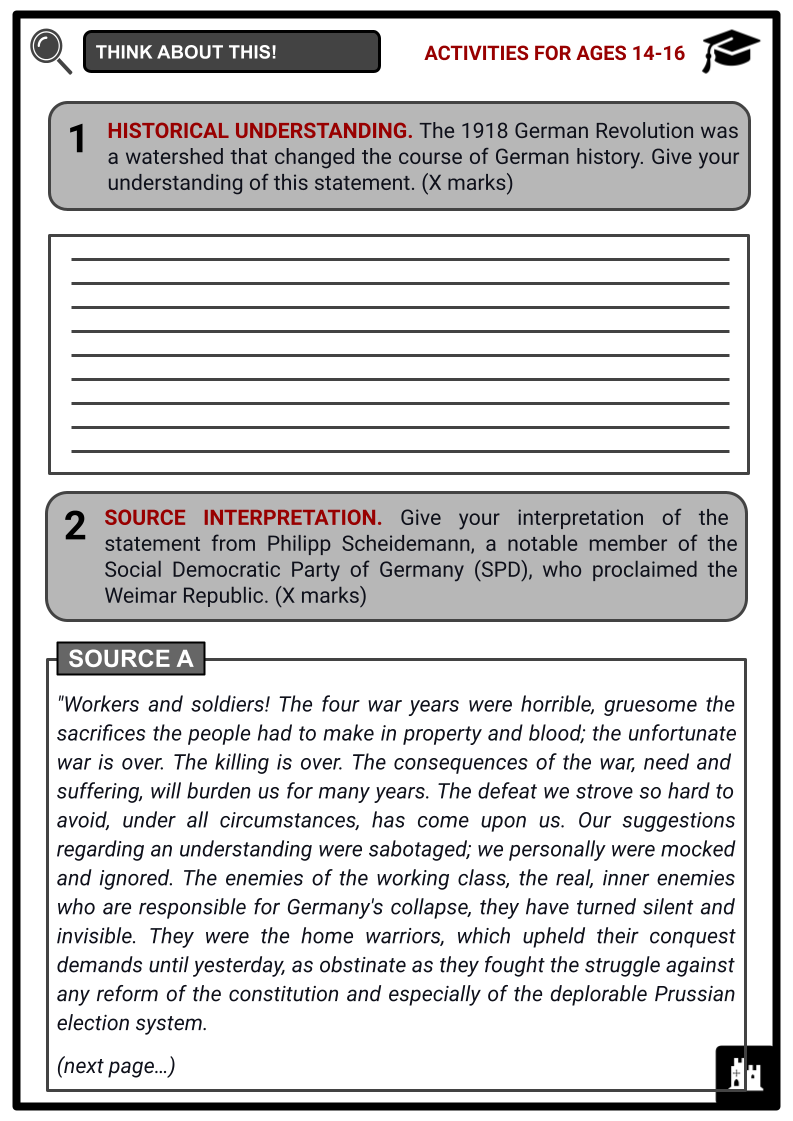
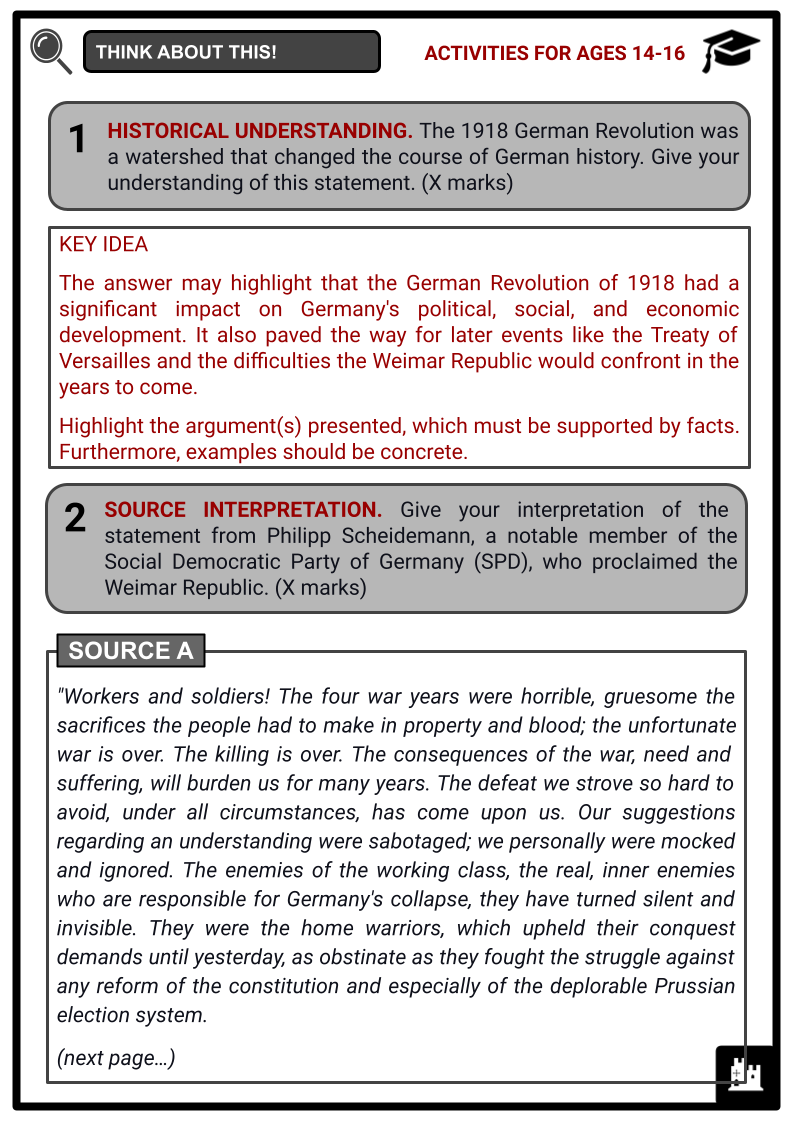
Summary
- Events Leading to the Revolution
- The 1918 Revolution
- The Treaty of Versailles and the Weimar Republic
Key Facts And Information
Let’s find out more about the 1918 German Revolution!
Often referred to as the November Revolution, the 1918 German Revolution was a turning point in German history. It occurred when the German monarchy ended which was propelled by political unrest, socioeconomic unrest, and the yearning for democratic changes.
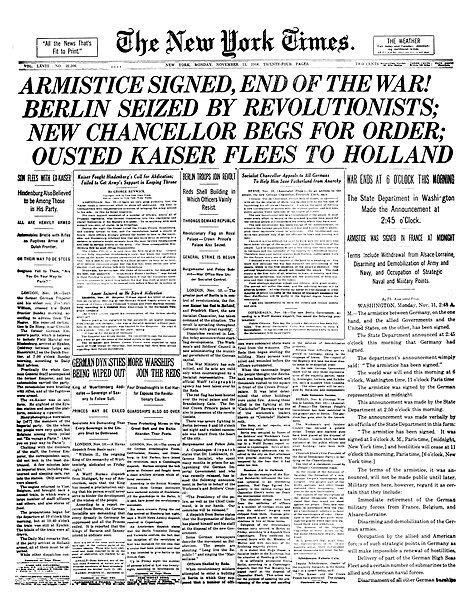
Events Leading to the Revolution
- From 1888 to 1918, Wilhelm II was Germany's Kaiser and Prussia's King. He inherited the throne from his father, Prince Frederick Wilhelm of Prussia, and Princess Victoria of England. Two years after his coronation, Wilhelm broke away from the German Chancellor Otto von Bismarck, and began to control German politics under his New Course.
- After unification into one German Empire, it was expected to be ruled under a constitutional monarchy wherein the monarch was supposed to lead with the parliament's advice. This did not happen, however, as the Kaiser ruled with absolute power.
- Democracy was introduced to Germany in 1871, and the German Parliament, the Reichstag, was established. Various political parties emerged representing different groups, including workers, Catholics, Protestants, and states like Bavaria, despite the Kaiser’s ambition for absolute rule. Initially, the Reichstag had 382 members until 1874, when it had 397. Representatives were first elected every three years until it was extended to five years in 1888.
- Kaiser Wilhelm continued to grow and his power, which slowed down the development of democracy in Germany.
- During the second half of the 19th century, Germany underwent industrialisation in which modern industries, including manufacturing and construction, replaced agricultural production. At the time of German unification, industrialisation was further fuelled by Germany becoming the largest industrial economy in Europe.
- By 1910, there were about 11 million German industrial workers, making them a dominant group able to influence politics. Due to support by workers, by 1912, the SPD, or the German Social Democratic Party, became the largest party in the Reichstag.
- Accompanied by rapid industrialisation, the German population doubled, especially in Berlin. By 1910, about 60% of Germans lived in cities such as Munich, Essen, and Kiel. But despite industrialisation and changes in demographics, the social hierarchy in German society remained the same.
- Years before World War I, Kaiser Wilhelm II adopted foreign and domestic policies that ignited tension in Europe. German ideologies of militarism, imperialism, nationalism, and the Kaiser’s ambitions set the stage for the Great War.
- By July 1914, Germany employed the Schlieffen Plan, which would see France and Belgium's swift invasion and capture in the coming months. By the middle of the year, the civilian population of Germany was sandwiched between Russian and British-French forces. Their trade and imports were affected by the blockade.
- Wilhelm's power decreased steadily in wartime, and by 1916, the Empire had become a military dictatorship controlled by Field Marshal von Hindenburg and General Erich Ludendorff. However, Wilhelm still retained the ultimate authority.
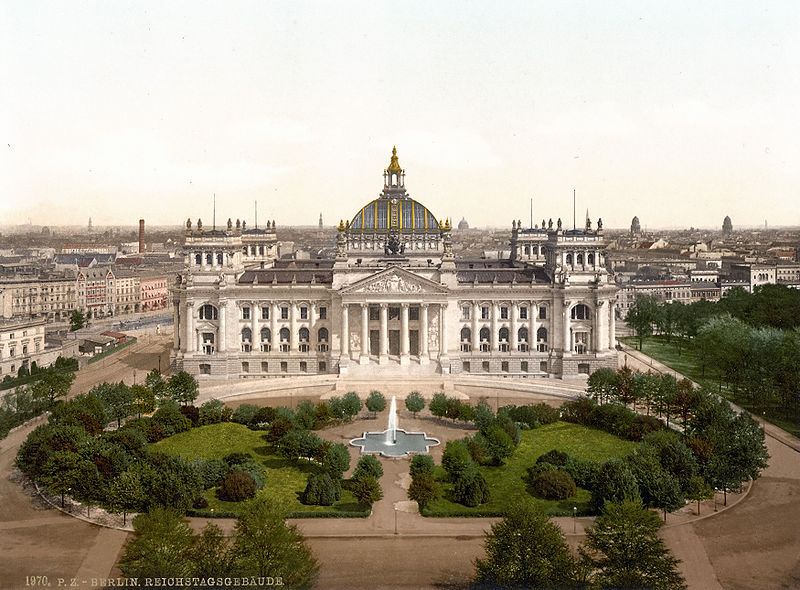
- In 1916, the Chancellor and Reichstag implemented a ‘Silent Dictatorship,’ a term used by some historians. They imposed food rationing and compulsory labour among adult men and seized control of the press. Eventually, agricultural workers were relocated to munition factories under the Hindenburg Programme. Unrestricted submarine warfare was also introduced.
The 1918 Revolution
- The 1918 German Revolution emerged at the end of the First World War. It resulted in the replacement of the German federal constitutional monarchy with a democratic parliamentary republic that later became known as the Weimar Republic and the creation of the Weimar Constitution.
- On 29 September 1918, the German Supreme Army Command informed Kaiser Wilhelm II that winning the war was hopeless. Ludendorff requested an immediate ceasefire and recommended the acceptance of U.S. President Woodrow Wilson’s Fourteen Points. Furthermore, support for the Kaiser had collapsed, and an uprising in Belgium took him by surprise.
- Prince Maximilian of Baden was appointed Chancellor of Germany (prime minister) in October to negotiate an armistice, not realising that the Kaiser’s abdication was an essential component for peace.
- The German Navy's Kiel Mutiny in October 1918 marked the start of the revolution when sailors defied authority and set off a series of demonstrations and uprisings. Socialist and Bolshevik ideologies gave rise to Workers' and Soldiers' Councils throughout Germany. These councils developed into essential tools of political power, undermining the monarchy's long-standing authority.
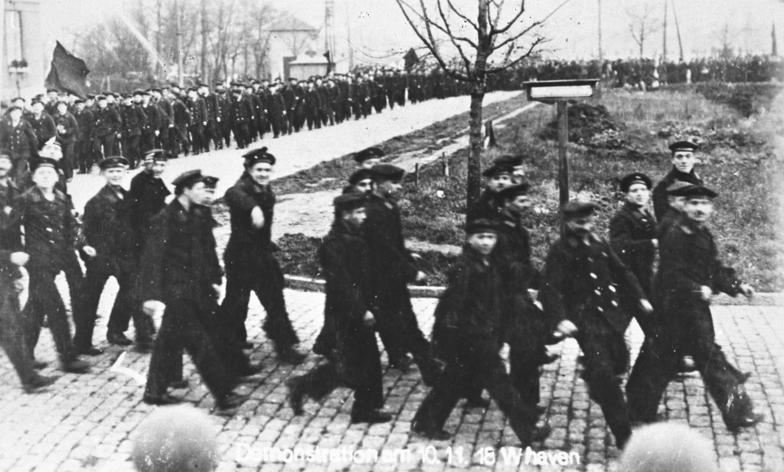
- There were shortages of food and other necessities in Germany due to the naval blockade enforced by the British Royal Navy. The war effort stretched the German Empire's resources, and unhappiness rose among the military and civilian populace alike.
- The Imperial German Navy's command for its High Seas Fleet to sail for a last, significant engagement with the British Royal Navy served as the direct cause of the Kiel Mutiny. The sailors disobeyed instructions because they understood how desperate the situation was and how pointless the operation would be.
- On 29 October 1918, sailors aboard the warship SMS Thüringen started the mutiny by refusing to follow orders. Other ships in the harbour swiftly followed suit with their denial. Taking inspiration from the Soviets in Russia, sailors established Soldiers' Councils, which included workers and soldiers in the decision-making process.
- The Kiel Mutiny garnered traction when Kiel's seamen and labourers showed support for one another. Civil servants, especially those employed by armaments manufacturers, were alongside the sailors in their demonstrations. Due in part to the sailors' and labourers' cooperation, the mutiny gained widespread support and expanded into a larger movement.
- Revolutionary acts were sparked all around Germany by the Kiel Mutiny. Workers' and Soldiers' Councils arose in other places, forming a web of revolutionary fervour. The impetus generated at Kiel was crucial to Kaiser Wilhelm II's eventual abdication and the formation of the Weimar Republic.
- 4 November. Characterised by the red flags flying over Imperial buildings, the flames of revolution in Germany began.
- 6 November. Hamburg, Bremen, and Lübeck were taken over by the Sailors’, Soldiers’, and Workers’ Councils.
- 7 & 8 November. Dresden, Leipzig, Chemnitz, Magdeburg, Brunswick, Frankfurt, Cologne, Stuttgart, Nuremberg, and Munich followed.
- 9 November. The Workers and Soldiers’ Councils were established in Berlin, which officially started the revolution.
- The emergence of the German Revolution caused Kaiser Wilhelm II to abdicate on 9 November 1918 when it became clear that only Friedrich Ebert, leader of the SPD, could effectively exert control of Germany. Wilhelm went into exile in the Netherlands.
- The Armistice of 11 November 1918 ended the conflict between the Allies and Germany, thereby ending WWI. It was prolonged three times until the Treaty of Versailles was signed on 28 June 1919 and took effect on 10 January 1920.
- After the war, food shortages in Germany were prevalent. Many civilians were on the brink of starvation as with most men drafted into the military and others moved into industry, there were insufficient labourers in agriculture. Around 750,000 people died of flu, other diseases, and starvation after the war. In addition, the newly established Weimar government experienced problems due to the shock of Germany's defeat in the war. German soldiers who returned from the war felt betrayed because of the country’s unexpected loss. As a result, those who were armed became sources of chaos. With about 2 million war casualties, the workforce could not recover.
The Treaty of Versailles and the Weimar Republic
- On 28 June 1919, the Treaty of Versailles was signed, which officially ended WWI. The Allies predominantly wrote the treaty with almost no participation from Germany. The treaty included 15 parts and 440 articles, including the establishment of the League of Nations.
- After the war, the monarchy was never restored, and Germany entered a period of isolation from international politics.
- Under the War Guilt Clause (article 231), the Germans were forced to accept the blame for the war. Aside from reparations and reduction of the armed forces, Germany lost vast territories and overseas colonies, including:
- Alsace-Lorraine
- Eupen-Malmedy
- Saar region
- East Prussia
- Rhineland (demilitarised)
- Estonia, Latvia, Lithuania
Moreover, Anschluss or the union of Germany and Austria was forbidden.
- The Treaty of Versailles blamed Germany for the First World War. As a result, Germany was held accountable for the cost of the war, and the Treaty dictated that compensation be paid to the Allies. The payments were called reparations.
- Amounting to £6.6 billion, equivalent to £248 billion in 2018, these factors would make it harder for the German economy to recover. Further to this, the casualties suffered during the war impacted the labour force. Germany lost approximately 1.7 million men during the war, and a further 4.2 million were listed as wounded.
- The economic might of Germany had been stretched to the limits during the war. Having to rebuild the economy while paying reparations made it a particularly difficult task. In addition, Germany had lost some of its most valuable sources of raw materials as its colonies and some of the areas ceded to other countries were rich sources of income.
- The Weimar Republic, a young democratic government faced with navigating the difficulties of post-war Germany, was established as a result of the revolution. Moderate socialist Friedrich Ebert was instrumental in the formation of the new administration. However, the republic had to deal with acute problems right away, including economic instability, political radicalism, and the strict terms of the Treaty of Versailles.
- The Weimar Republic was a short-lived democratic government of Germany that began in 1919 and ended in 1933. Despite its notable achievements with a few national policies, its inability to address socio-political weaknesses contributed to its collapse:
- Clashes between the Social Democrats, who set up the parliamentary system, and the Communist Party. Monarchist groups were also against the Republic.
- Many parties had different aims, making it difficult to unite and govern. In addition, President Ebert was not a popular leader.
- Article 48 gave the president absolute power in times of emergency. Moreover, election by proportional representation made the passage of laws by small parties difficult. Amidst having several weaknesses, the Weimar Republic and Constitution provided Germans with a voting system based on fairness. Moreover, Article 48 granted the President the power to make quick decisions in emergencies, and it allowed several political parties to exist and run the country.
- The German Revolution of 1918 was a turning point that altered the direction of German history. The aftermath of the revolution, which was characterised by political unrest, economic hardships, and the emergence of radicalism, is still an essential part of the intricate dynamics of Europe during the 20th century.
Frequently Asked Questions
- What was the 1918 German Revolution?
The 1918 German Revolution refers to the series of events in Germany at the end of the First World War that led to Emperor Wilhelm II's abdication and the establishment of the Weimar Republic.
- What were the leading causes of the 1918 German Revolution?
The revolution was primarily caused by WWI's exhaustion and economic strain, discontent with the monarchy, food shortages, and the desire for a democratic government.
- How did the First World War contribute to the revolution in Germany?
The heavy toll of the war, both in terms of human lives and economic resources, led to widespread discontent among the German population. Military failures and economic hardships fueled the desire for change.
